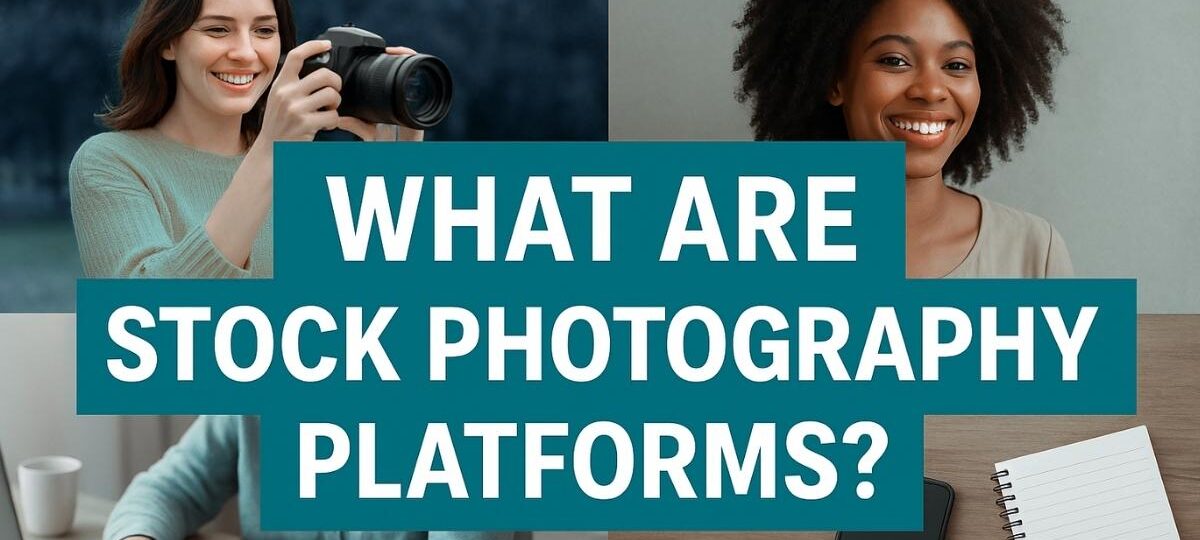When your website, social media post, or ad needs an eye-catching visual, chances are the solution is a stock photography platform. These sites are treasure troves of images and videos, created by photographers and digital artists, and licensed for use in all sorts of projects—from personal blogs to big-brand marketing campaigns. But with so many options out there, how do you know where to go? Let’s explore the landscape, focusing on both top-tier platforms and how you can become a contributor—especially at Shutterstock.
What Are Stock Photography Platforms?
At their core, stock photo websites are digital marketplaces. Creators upload and license imagery, while customers purchase rights to embed these visuals in their own work—no photo shoots, no NDAs, just instant downloads. They’ve evolved dramatically since the early days of Rights-Managed imagery, which charged high fees based on usage. Microstock platforms like Shutterstock, iStock, and Adobe Stock changed the game by offering affordable, royalty-free licenses—making stock imagery accessible to everyone.
Paid vs. Free: What Suits You Best?
The choice between paid and free stock platforms often comes down to quality, licensing terms, and your specific use case.
- Free platforms (e.g., Pexels, Unsplash, Pixabay) offer quick, no-cost access to vibrant, lifestyle-oriented visuals—perfect for bloggers, students, and small business owners.
- Paid platforms provide editorial-grade images, secure licensing, and extensive libraries. These include Shutterstock, Adobe Stock, iStock, Depositphotos, and Dreamstime, all catering to creators who need professional-grade assets.
Premium Stock Platforms: What Makes Them Worth It
Shutterstock
With over 450 million assets, Shutterstock boasts one of the largest and most varied libraries on the web. Their Content Library is supported by tools like Shutterstock Generate (their AI-based image creator linked with OpenAI’s DALL-E), and AI-powered keyword suggestions. Since 2023, Shutterstock accepts contributor-supplied, AI-generated content under clear ethical guidelines. After merging with Getty Images in January 2025, the platform solidified its place as an industry titan.
Adobe Stock
Perfect for creatives in Adobe’s ecosystem, Adobe Stock offers seamless integration with Lightroom and Photoshop, and contributors can earn royalties up to 35% on video and 33% on photo sales.
iStock (Getty)
Known for its flexible licensing and diverse contributor base (over 300,000 globally), iStock offers starting contributor royalties from 15%, rising to as much as 45% for exclusivity.
Depositphotos & Dreamstime
These microstock staples continue to grow—with Depositphotos housing around 200 million files and Dreamstime hosting approximately 198 million images within a vibrant community of contributors.
Spotlight: Shutterstock Contributor Program
If you’ve ever thought about making money from your photos or videos, Shutterstock is a great place to start.
How It Works
- Sign up via the Shutterstock Contributor portal.
- Upload high-quality, release-cleared content
- When approved, each download earns you royalties.
How Much You Can Earn
- Entry-level contributors start at ~$0.04 per image; video earns around 10%
- Contributors may rise through royalty tiers up to 40% as their libraries grow
- Refer others and earn commissions: 20% on first payments by referrals and $0.04 per image by referred contributors for two years
- According to TagWithAI, portfolios of 1,000 images may earn $50–300/month; 10,000 assets can pull in $300–2,000 or more https://www.tagwithai.com/blog/how-to-become-a-shutterstock-contributor/
Payments
Shutterstock pays contributors monthly (7th–15th), once the minimum $25 threshold is met, via PayPal, Payoneer, or Skrill.
Tips for Excelling
- Focus on trending, high-demand categories like health, remote work, diversity, and lifestyle.
- Use AI-powered keyword tools to maximize visibility.
- High-quality releases, sharply composed shots, and consistent uploading are key.
One contributor shared in r/stockphotography that uploading 200 assets can yield $250 in total earnings, with consistent daily uploads and optimized metadata.
What’s Driving Stock Photography in 2025?
Demand for Authentic, Diverse Imagery
Buyers increasingly seek visuals that reflect real life, inclusivity, mental wellness, and remote work—trends clearly visible in Shutterstock’s top categories for 2025.
AI Powers the Future
Shutterstock’s AI tools—from image generation to metadata suggestions—are reshaping how content is created and tagged. But traditional photography—real models in real settings—still holds strong buyer trust and appeal.
Industry Consolidation
The Getty–Shutterstock merger means broader access, unified content, and a more advantageous position for contributors in an increasingly competitive marketplace.
Smooth Scoring & Smart Strategy
Drawing on contributors’ experiences and industry trends:
- Find your niche: Focus on popular markets—wellness, business, lifestyle, and tech.
- Equipment:
- Smartphones can suffice when used skillfully
- DSLRs or mirrorless cameras are ideal for editorial or technical shoots.
- Metadata matters: Descriptive keywords and titles significantly boost discoverability.
- Consistent uploads: Frequent, high-quality submissions help you stay visible in the marketplace.
- Stay diversified: Use both paid platforms (for revenue) and free platforms (for exposure), or niche sites with higher royalties.
- Be AI-aware: Label AI-generated imagery properly and continue offering unique, human-touched photography.
Common Challenges to Know
- Legal risks: Always secure proper releases and avoid copyrighted content.
- Market saturation: With millions of images added daily, standing out can be tough.
- Income ebb and flow: Many contributors earn modestly—often under a few hundred dollars per month—unless they consistently upload strong work.
Conclusion
Stock photography platforms offer incredible value to both consumers and creators. For buyers, they provide affordable, high-quality visuals with clear licensing. For contributors, especially via major channels like Shutterstock, stock photo income ranges from casual side hustle to full freelance business—if approached strategically. In 2025, success hinges on authentic content, smart keywording, niche focus, and awareness of AI-driven shifts.
FAQs

1. Can I earn a full-time income as a contributor?
Yes, but it typically requires a large, high-quality portfolio (thousands of images), regular uploads, trending themes, and strategic keywording.
2. Are AI-generated images accepted?
Yes—under clear labeling and copyright-compliance rules. Platforms like Shutterstock, Adobe Stock, and others permit them, but still prioritize human-produced authenticity.
3. What’s the best platform for new contributors?
Shutterstock is excellent for beginners—thanks to referral bonuses, tiered rewards, and growth tools. Speaking from interviews, new contributors can expect $0.04+ per image initially.
4. Do I need expensive gear?
Not necessarily. Smartphones can suffice for well-lit, composed shots. However, DSLRs offer superior quality, especially for detailed, editorial-style images.
5. How often should I upload?
Consistent uploading matters. Daily or weekly additions keep your portfolio active and increase visibility and income potential










